Top Generative Design Tools for AEC: How Far Have They Come?
Just a mere few years before 2025, the tech scene of the AEC Industry was rather easy to navigate. A handful of industry leaders, with very recognizable names, dominated the market for tools and software products from pre-design all the way until construction and commissioning. It was also a time when AI applications in design and engineering were not very commonplace and were hardly talked about, let alone implemented as full-scale products/services. Seasoned professionals would well remember this time, as the market then appeared to saturate with no innovations ahead.
Enter the SaaS boom in the AECTech space: over a span of just 2-3 years around the pandemic, hundreds of software products and toolkits sprang into existence, each addressing a problem that has long remained unsolved by the industry giants for years. Of these, in particular, products that specifically tackle and solve early-phase site design, massing, and schematics grew immensely in popularity, owing to their potential to solve some of the most crucial problems in building and site design. aec+tech has been following their journey for a while—our 2023 article, “The Evolution of Generative Design: Tools on the Rise” threw some much needed light on these innovations, playing our part in mainstreaming these tools to a larger audience.
Fast forward to 2025, the market for AECTech tools has only expanded multifold. There are more and more AI-first software and toolkits, with some tools having gained a significant userbase, challenging erstwhile ‘big names’ in their domains.
We at aec+tech have identified Generative Design tools that have had a continuous market presence, and significant growth and transformation over the past 5 years. Their journeys from their early conception to their current maturity have been impressive, and it is remarkable to see how far along they’ve come.
TestFit
Probably one of the most notable early-stage feasibility platforms in the North American market, TestFit brands itself as a New Real-estate Feasibility Workflow, offering real-time insights into design, cost and constructability all in one place.
Promising a 4x faster site-planning process while enabling you to iterate 3x more design variants, TestFit has made some very remarkable strides in positioning itself in the real-estate market. True, the product is put to use in hundreds of deals every week, by numerous property developers and architecture practices, as evidenced by the growing number of their customers’ success stories.
Over the past few years, they’ve extended support to configure and evaluate an increased number of building typologies and functions, supported by their real-time AI. TestFit doesn’t just generate massing options for your site, rather the real-time AI optimizes for the best site solution based on your interior and exterior requirements and Pro Forma inputs, thereby letting you evaluate your deals with accuracy.
Apart from the design configuration and iteration, the most valuable selling point of the TestFit service would be the embedded financial model that provides stakeholders with the right numbers to make decisions. Rendering you with real-time insights on unit counts, envelope area, parking stall counts, costs, and so on, TestFit makes available just the relevant and required amount of data to close deals quickly and effectively.
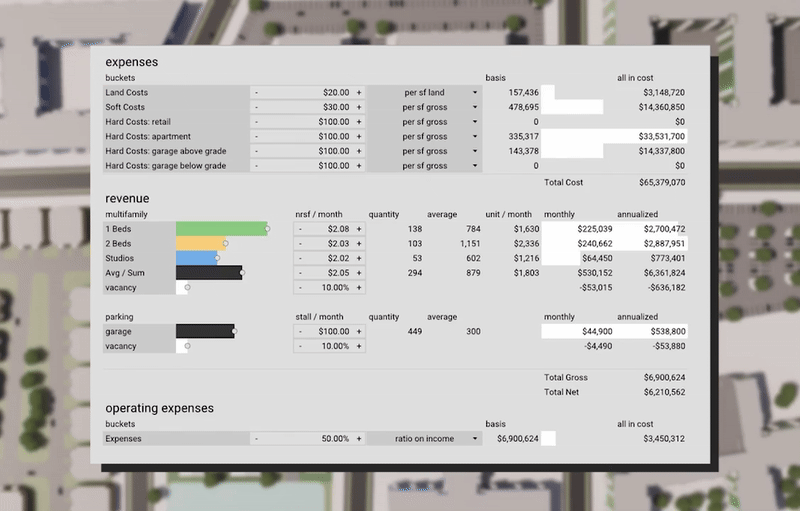
TestFit has transformed itself from an AECTech tool with a lot of potential, to realising all that potential to become a strategic partner for real-estate and property developers, helping overcome some of the biggest hurdles in the site design process.
Autodesk Forma
Oslo-based Spacemaker was an early front-runner in cloud-based AI software that allowed property developers and planners to analyze different schematic options for their sites. Users were able to generate and optimize building configurations based on terrain, sunlight, wind, zoning, traffic, etc., which were informed by real-time environmental simulations for early-stage planning.
Soon enough, the software was making a name for outcome-focused analysis, including increasing unit density, improving sunlight access, boosting apartments with sea views, and so on: all those things that made it appealing to developers in the European market.
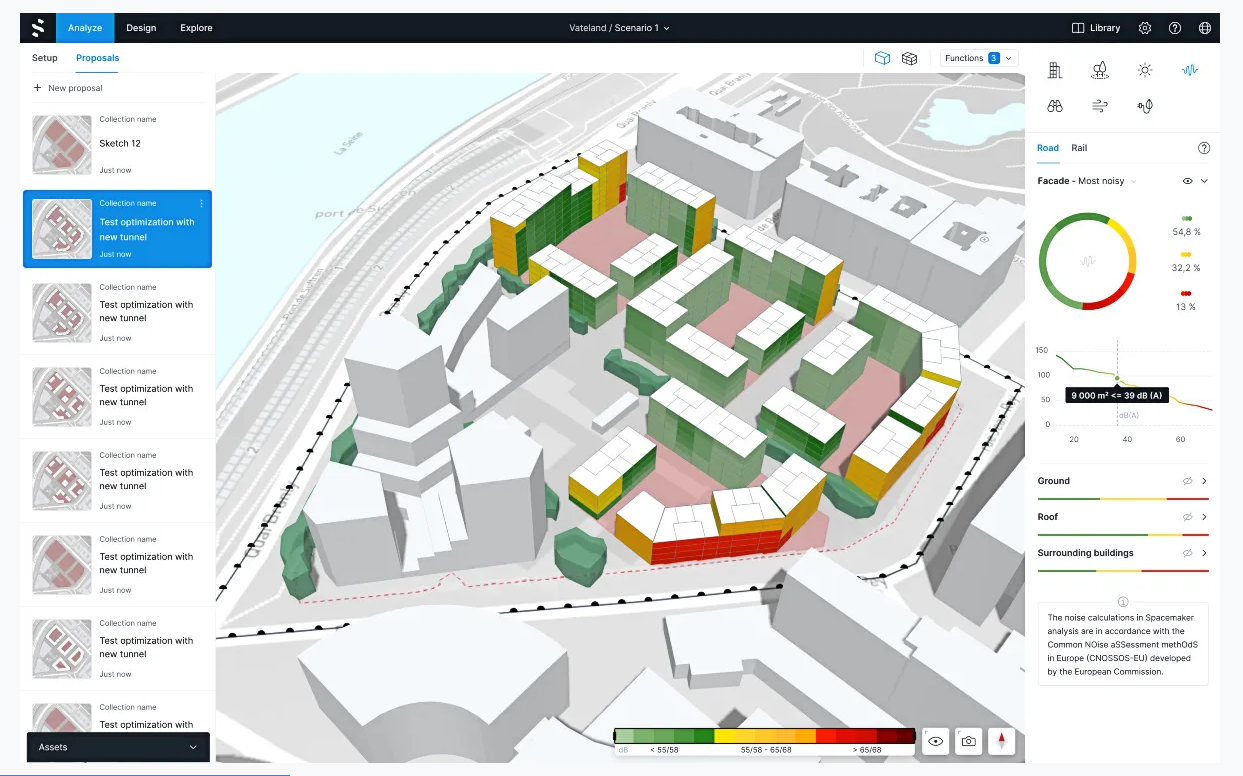
Enter software-giant Autodesk in late 2020: in a massive $240 million acquisition, Autodesk bought Spacemaker and commenced its integration into their flagship early-stage design product Autodesk Forma. With this product, Autodesk has brought together Spacemaker’s AI site planning, FormIt’s freeform conceptual modeling tools, and their own new granular cloud data model, while hooking them to the live sync with Revit, through a file-less plugin. Autodesk thus achieved their signature unitized workflow, to transition from conceptual design to detailed BIM all in the same ecosystem.
The results? Forma adoption reportedly grew 500% post-launch, indicating rapid uptake among architects and early adopters of Autodesk’s AEC cloud tools. In addition, Spacemaker’s pre‑existing user base was migrated seamlessly into Forma, with significant cloud-based upgrades and rebranding.
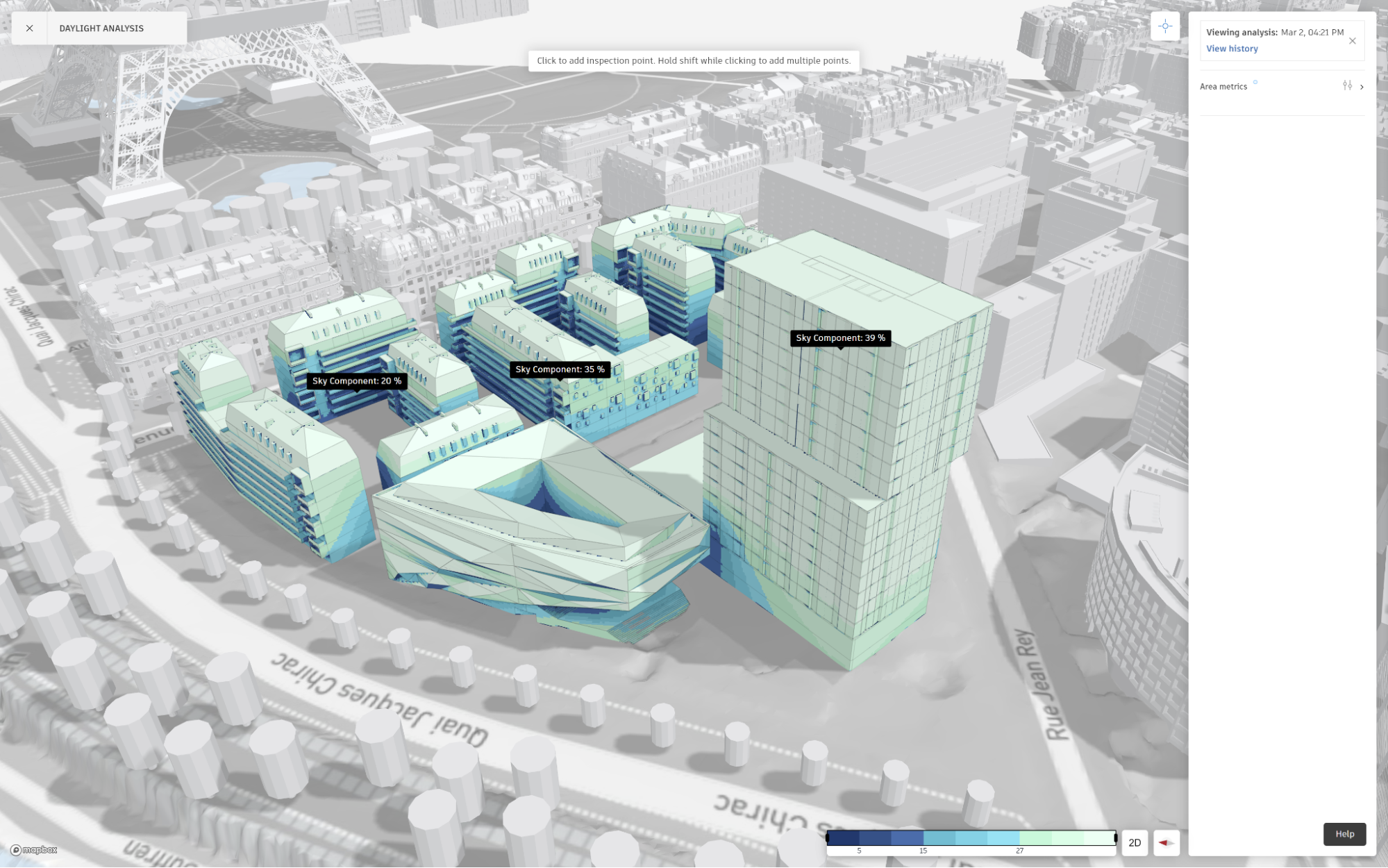
Favorably enough, what followed were lowered pricing options, making the technology accessible to a broader user base expanding beyond developers to architects worldwide. Since architects are already adept in Autodesk software, with most workflows in medium- and large-scale offices centred on Revit, integrating Forma into the workflow proved to be a natural decision for many practices, contributing to the large pool of users today.
Not only, the integration also saw newer product features and interoperability capabilities that weren’t originally seen in Spacemaker, but are now a valuable addition. Forma lets you perform, apart from environmental analyses, evaluations of your project’s embodied carbon, an increasingly growing concern in the AEC industry. Plus, Forma also enables you to link with third-party tools via extensions: it supports plugins like TestFit (for parking layouts) and Rhino Inside, fostering a wider ecosystem.
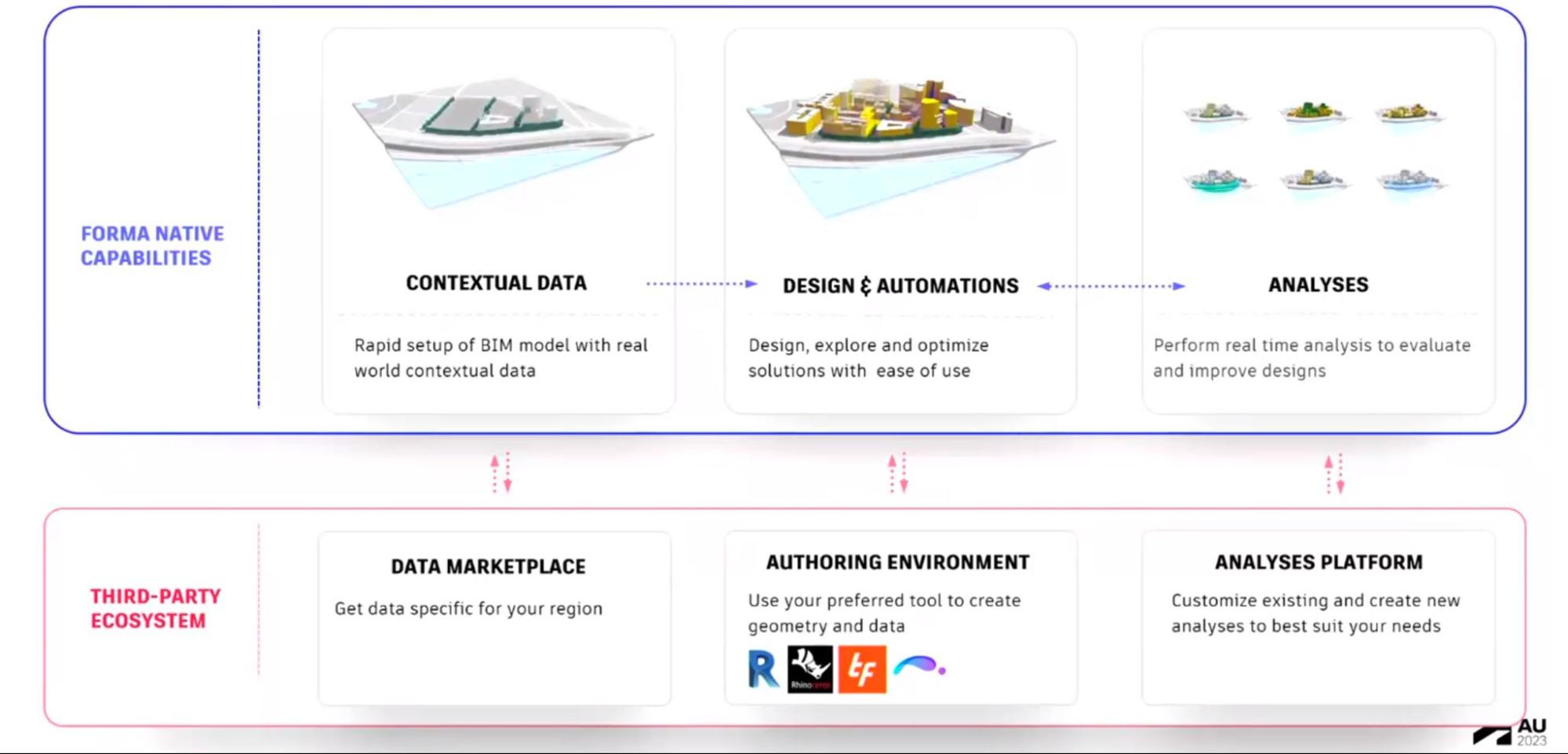
Do check out our exclusive articles series on Autodesk Forma here, to know more about its many features and use-cases!
Hypar
Launched in 2018 by industry veterans Anthony Hauck (ex‑Revit lead at Autodesk) and Ian Keough (creator of Dynamo), Hypar set out as a cloud-native, open-standards platform where users could combine modular generative tools (aptly called functions) to build systems like building envelopes, structures, floorplans, and so on. The co-founders placed a lot of emphasis on the accessibility of the product: non-programmers could simply click to generate intelligent design variants, while developers could craft custom functions via C# or Python.
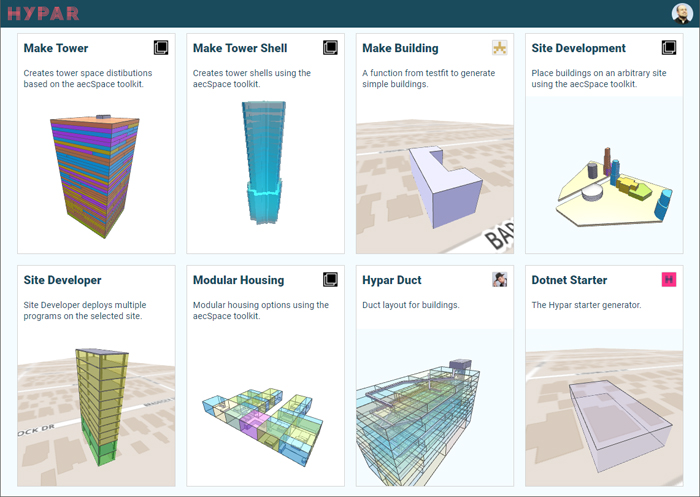
Hypar also pioneered the Text-to-BIM functionality with a prototypical chat-style interface where users fed building descriptions ("two-storey retail + 14-storey residential L-shape") and got full BIM models as outputs. Moreover, users could share, sell, or combine their functions using open formats (IFC, Revit export), akin to an app-store model, which contributed to their early success. By late 2020, Hypar had over 2,000 users especially in the North American and Northern European markets, quite the turnout for an AEC startup.
Followed by the influx of a $5.5 million funding in June 2023, Hypar expanded its features, growing the developer ecosystem, and targeting industry workflows like test-fits, healthcare, and workspace design. The company continued its focus on ease-of-use and accessibility of the tool, with many users highlighting intuition and approachability as key attributes that led them to prefer Hypar, compared to heavy CAD/BIM tools.
More recently, Hypar marked a shift to AI-infused layout suggestions, integrating large-language models to drive prompts into function parameters, thereby delivering an intelligent framework as a solution for further design exploration, rather than a single, stochastic, black-box answer. One should also commend the focus on designer control, where the visualization is linked to the parametric inputs rather than fixed-output generation.
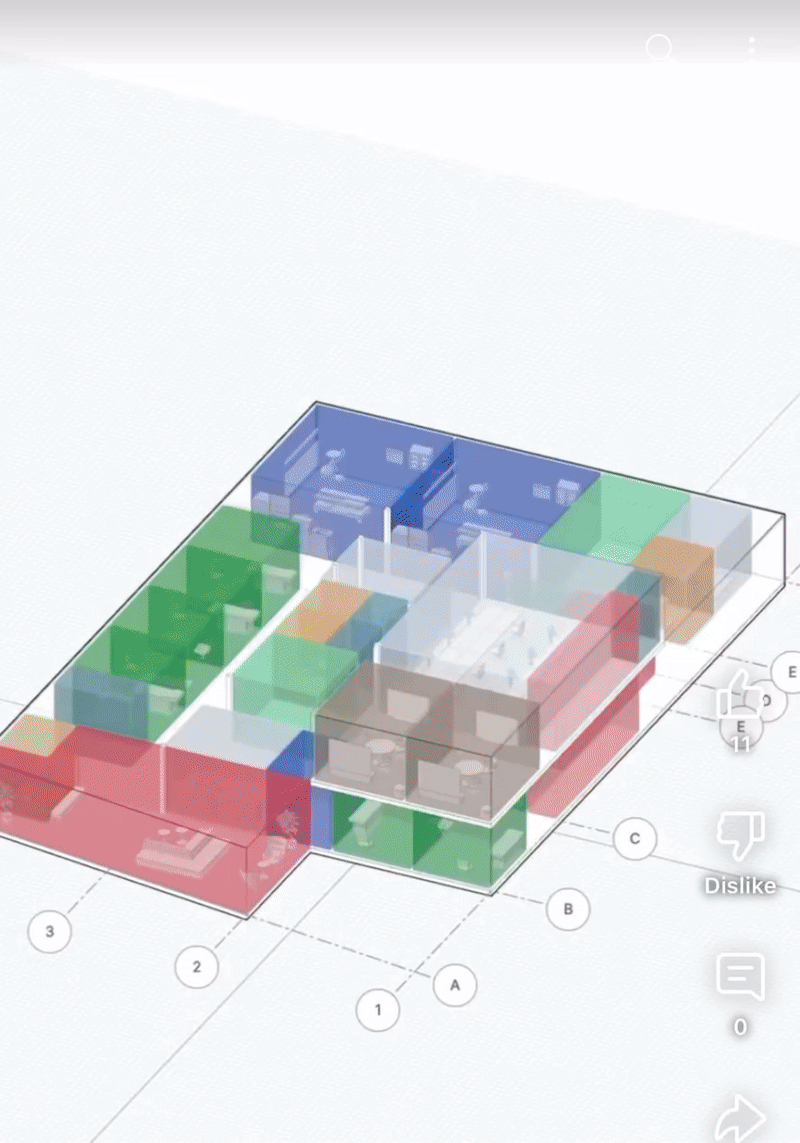
With an expanding pool of interoperability and ecosystem integration features, Hypar is certainly going in the right direction. A blend of automation with design control, fostering a collaborative ecosystem via functions, has been a fruitful formula for Hypar that placed it in a favorable position in the market. Thousands of users, real pilot implementations (e.g. S/L/A/M, Adrianse), expanding to healthcare, workspace, data center planning, all pave the way for a successful roadmap ahead, for Hypar!
Delve - Google Earth
Perhaps the most interesting transformation of all the AECTech tools that we’ve followed over the past few years may have happened to Delve. Launched by Sidewalk Labs in 2020 as a ‘generative design solution using machine learning to empower real-estate teams’, Delve has since then been acquired by none other than Google LLC. True, the multinational tech company has nested Sidewalk Labs as one of its urban innovation units.
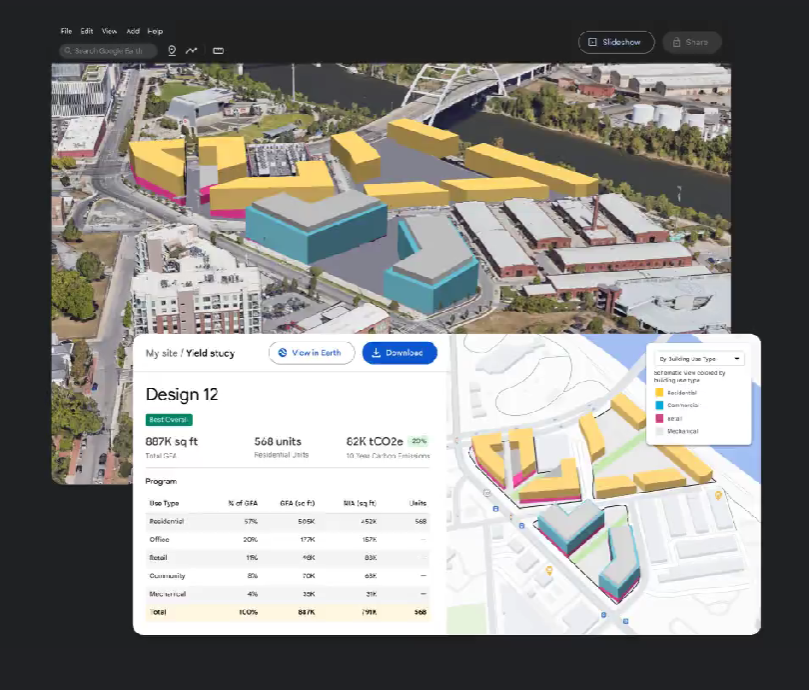
It is however noteworthy that Delve as it once existed and worked, back in 2021, can no longer be accessed today. Rather, Delve leads to a Google Earth webpage (try it out here), wherein you could evaluate building and solar design options for early-stage urban development in minutes. It appears, all the generative design and site schematics functionalities of Delve are now a part of Google Earth, with an emphasis on solar potential estimation as one of its key features.
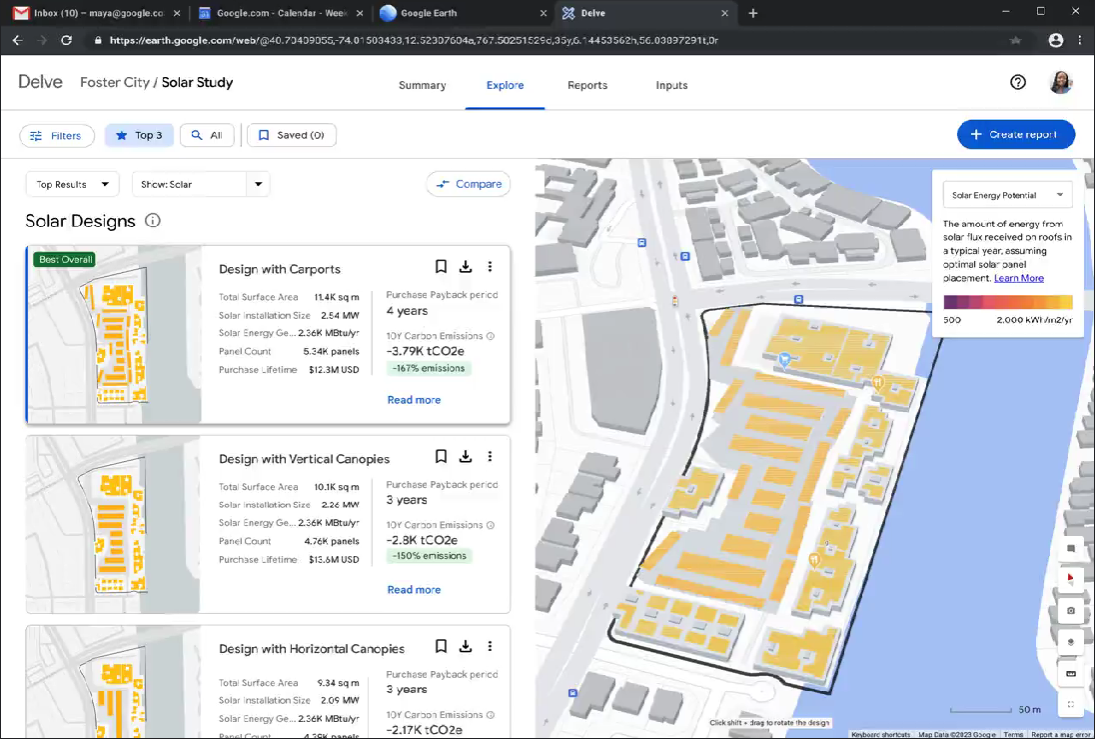
What’s disappointing, though, is that none of these features are readily accessible within Google Earth right away. After an initial sign up, you’re expected to wait to obtain a 60-day trial with which the Generative Design features can be put to use. More so, there isn’t any information publicly available as yet about subscriptions, continued use of these tools, updates, and so on.
Seems like we are going to have to wait to fully delve into designing with Google Earth, after all!
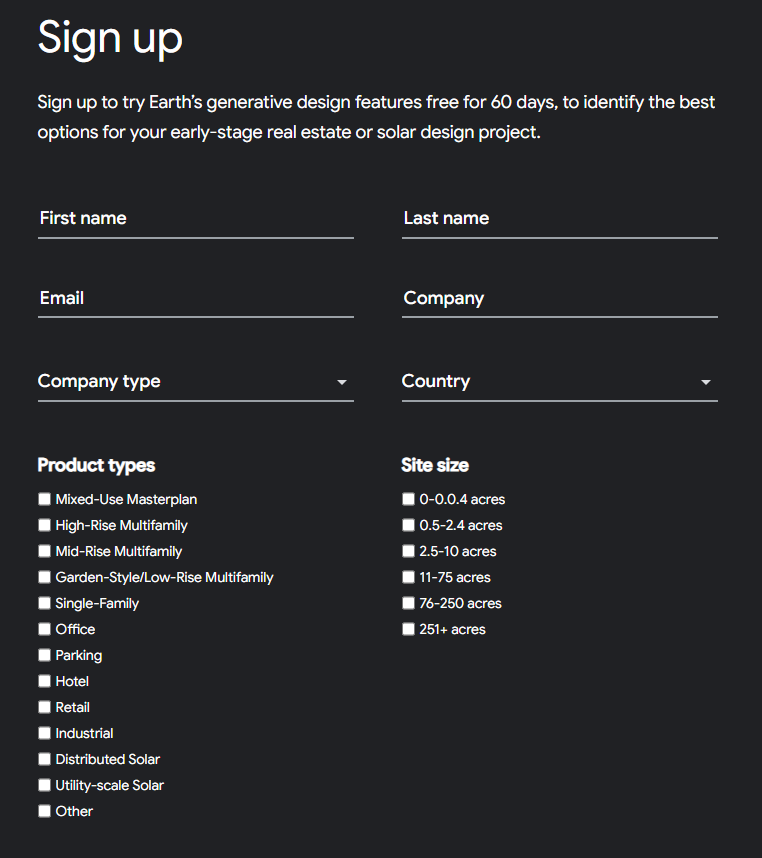
The last 5 years saw a tremendous growth in the advent of tech products for AEC, with many ripple effects instigated in the market as a consequence. New tools are introduced every passing day, each answering a question more nuanced and crucial than the one before. Like we keep reiterating, the market for AECTech products has been on a continuous rise for a few years now. There are many more, equally promising Generative Design products out there, like Finch, Digital Blue Foam, Skema, Giraffe, Archistar, Morphis, to name a few. While the technologies that back them constantly evolve, the rigor and the zeal that the industry exhibits in problem-solving, and the journeys that companies undertake over the many years of their development, are certainly something to behold.
And as we always say, we have some very exciting times ahead for the AECTech space!
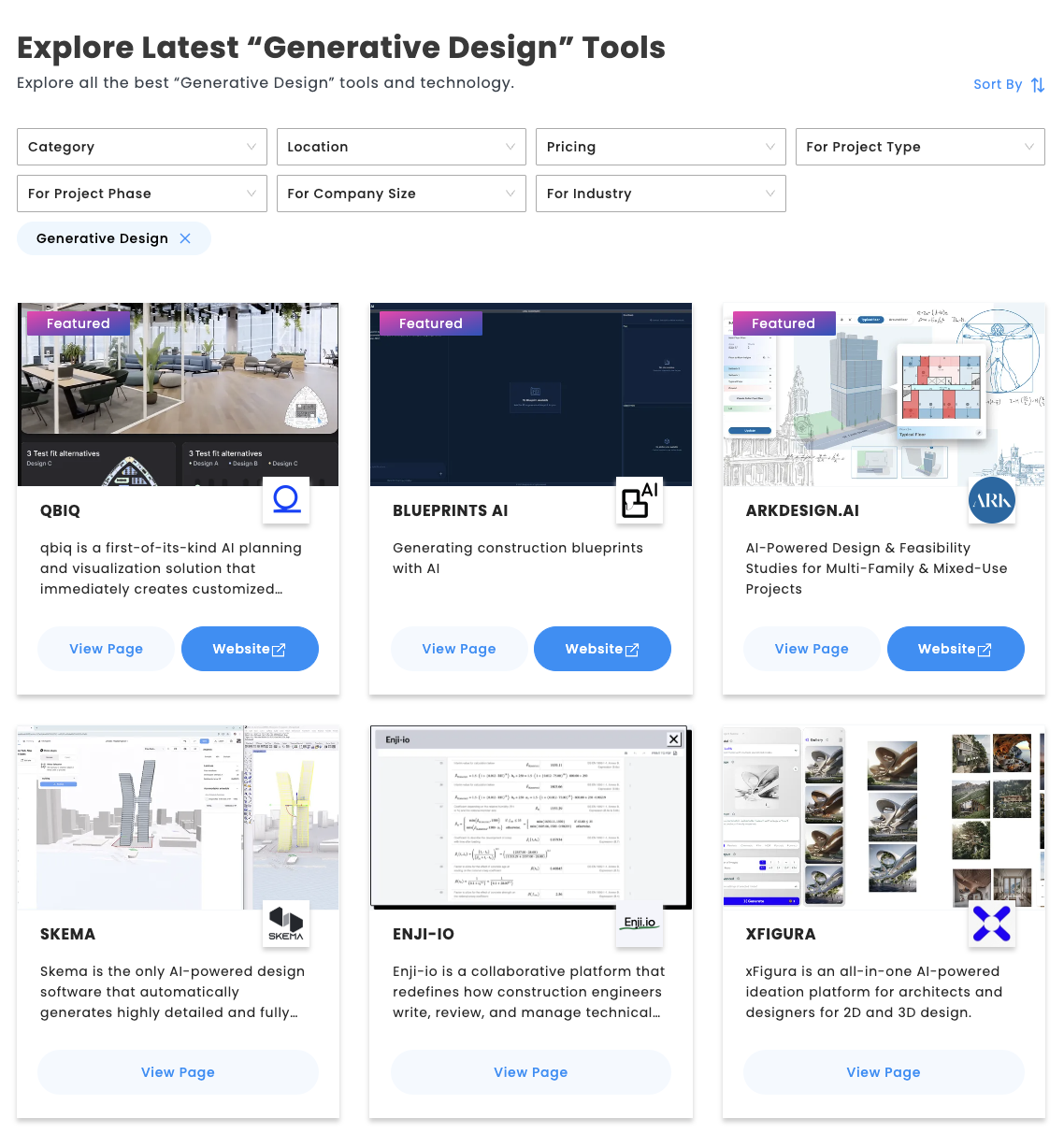
For a comprehensive list of the latest Generative Design tools for the AEC space, please check out the category here.
Recent Articles
Learn about the latest architecture software, engineering automation tools, & construction technologies

Pioneering Technical Report Management (TRM™) for AEC Firms: A Quire Deep Dive
Learn how Quire founder Kelly Stratton is reinventing technical reporting in our latest aec+tech interview, where its purpose-built TRM™ platform, WordBank-powered standardization, AI-driven Smart Search, quality control, and the Lazarus knowledge engine come together to help AEC, environmental, and CRE teams cut reporting time and errors while unlocking their institutional expertise.
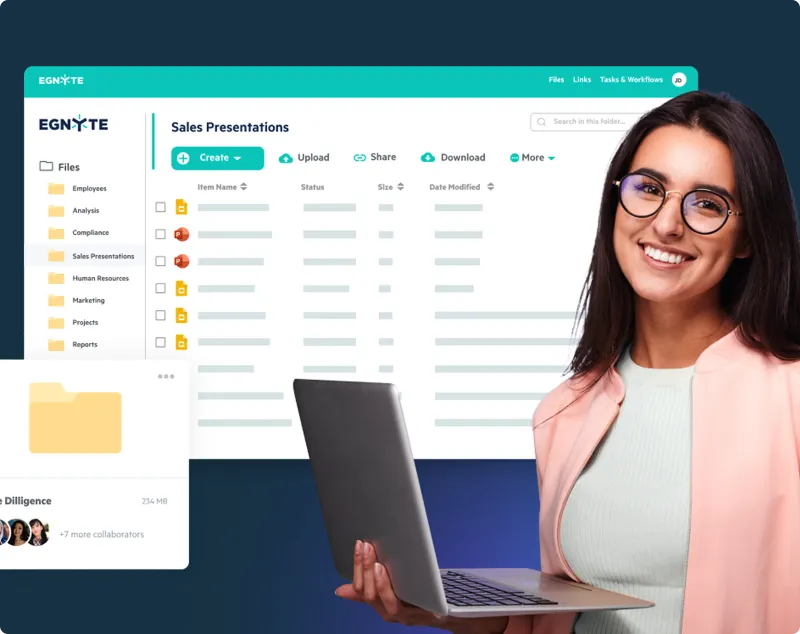
Moving to the Cloud: Egnyte’s Staged Approach for Architecture Firms
As projects grow, AEC firms are rethinking data management and collaboration. This article outlines Egnyte’s six-stage Architecture Cloud Journey—a practical roadmap for moving from on-premise systems to secure, collaborative cloud environments. From assessment to continuous improvement, it shows how to streamline workflows, strengthen security, and future-proof with AI-ready infrastructure.

SaaS Founders: Are You Timing Your GTM Right?
This article was written by Frank Schuyer, who brings firsthand experience as a founder in the software and SaaS world. In this piece, he explores how founders can unlock faster growth and stronger market traction by integrating go-to-market strategy (GTM) from the very beginning of product development—rather than treating it as an afterthought.
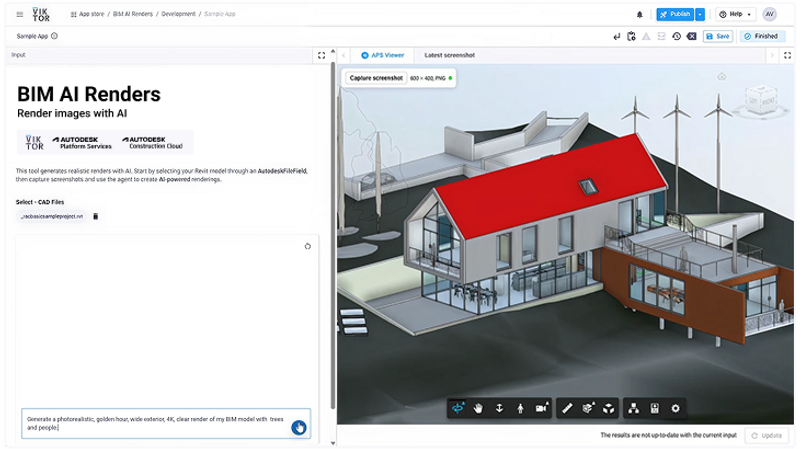
The VIKTOR App Builder: Putting Automation into Every Engineer's Hands
The VIKTOR App Builder is changing how engineers automate their work. Built on VIKTOR’s secure, enterprise-ready platform, it lets users turn calculations, checks, and post-processing tasks into shareable browser-based apps—no coding required. In this interview, CPO Stijn Jansen explains why the team created it, how it bridges no-code, low-code, and full-code workflows, and what it means for the future of AI-assisted engineering.